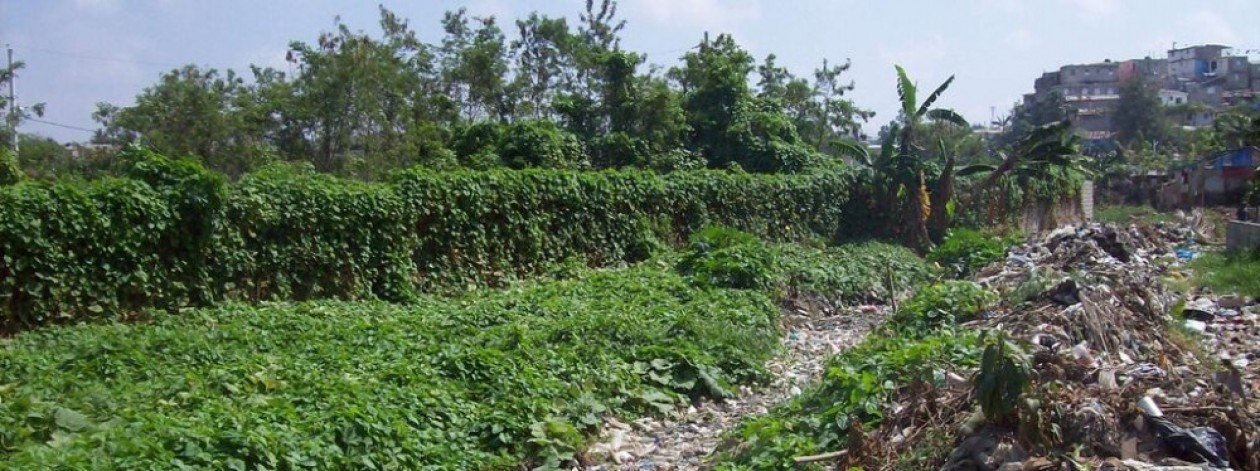The settlement is located in a deep ravine surrounded on three sides by ridges of consolidated, middle-class development. The land Los Platanitos is built on was previously used for plantain cultivation, and it was then converted into a landfill site for the larger Santo Domingo metropolitan area. Rural migrants first settled the area in the early 1980s. These founding residents covered the landfill with a thin layer of gravel, on top of which they built rudimentary homes of sheet metal and scavenged wood.

Today, Los Platanitos is a densely built informal settlement home to some 2000 residents who have improved their houses, built their own infrastructure, and have partially tapped into the water and electricity grids of the formal city.
However, the cañada itself remains a significant challenge. Residents have attempted to exert some degree of control over the waterway by erecting retaining walls, dredging particularly shallow areas, and building small walking bridges and culverts. Because the community does not receive formal municipal waste collection services, the cañada has become an informal depository for household and community waste both from Los Platanitos and the surrounding consolidated developments. As a result, it has become a severe source of pollution and contamination. The black stream regularly overflows its banks during times of heavy rain, flooding surrounding houses with polluted water and exacerbating risks of respiratory and gastrointestinal illness.

